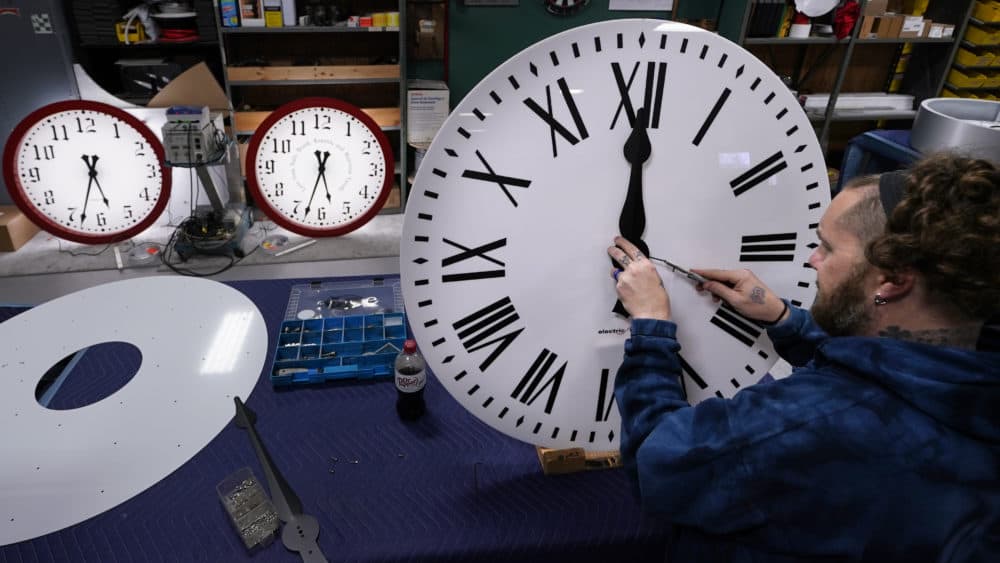Advertisement
Commentary
Changing the clocks twice a year is jarring. That’s why we should keep doing it

Like the first robin of spring, arguments about whether to cancel daylight savings time have come bob-bob-bobbing along again. The practice of switching the clocks forward and back is obsolete, unpopular and unhealthy, we hear. It wrenches our circadian rhythms out of sync. Poll after poll shows Americans hate it almost as much as that other springtime ritual: paying taxes. It’s a nonsensical nuisance, it doesn’t save significant energy , and it forces school kids to wait at bus stops in the pre-dawn dark. Stop the madness!
But daylight saving time is a celestial gift that comes literally overnight, and I know I’ll feel a little thrill this weekend when the clocks spring ahead. It’s magical: On Saturday, we’ll slog through the gloom of sunset at 5:46 p.m.; by Sunday, we’ll bask in luminosity until 6:47. I love the unexpected arrival of golden spring evenings, the vaguely pagan sense of being reborn with the light, even the quirky ritual of resetting my watch twice a year. It’s one of the few things almost everyone in a fiercely divided America does together — grumbling all the way, perhaps, but together.
I know mine is a minority opinion. Everyone from Sen. Ed Markey to Sen. Marco Rubio, the Florida Republican, thinks it’s time to retire our habit of turning the clocks this way and that. Each year we’re deluged with data about the missed meetings, disrupted naptimes, jetlag symptoms and fender-benders that accompany the switch, especially in the spring, when we lose an hour of sleep. In 2020 the American Academy of Sleep Medicine officially called for the elimination of Daylight Saving Time, citing “increased risk of cardiovascular events, mood disorders and motor vehicle crashes,” not to mention spiking consumption of caffeine.
I’m even on the wrong side of myself, since most of the boosterism for daylight saving time comes not from sun worshippers like me but from a business community that sees more profits in longer shopping days or later golf tee times. Also, I don’t think it’s nice to fool Mother Nature.
But the 1966 law establishing daylight saving time — a rare act of wisdom and kindness from Congress — has benefits beyond after-school sports or after-dinner strolls. The abrupt time change jars us out of our routines and into noticing. We’re suddenly aware of the Earth tilting on its axis, of birdsong at breakfast, of the snowdrops and Lenten roses pushing their way through last year’s mulch to bloom right on time. It’s paradoxical, because daylight saving time is an artificial construct (as is “time,” I guess) and yet it helps us be more in tune with the natural world. Yes, the first red buds swelling on the maples and the salamanders emerging from their winter burrows would do that anyway, regardless of the hands on the clock. It’s just harder for us to see in the dark.
Despite the growing support, I think eliminating the semi-annual time switch would make us all a little poorer. I have a friend with a life philosophy she calls “the hedonistic fallacy” — the idea that indulging our desire for pleasure diminishes the pleasure itself. If we had ice cream every day — or an extra hour of daylight all year long — I fear we’d stop appreciating it.
To be sure, a few states and US territories — Arizona, Hawaii, Puerto Rico, the US Virgin Islands and Guam — don’t observe daylight saving time at all, and I guess that’s their right. But think about what those places have in common: sunshine, and plenty of it. Why deprive us poor seasonally affected Northerners of our meager hour of hope?
Last week Markey and Rubio refiled the cheerily named Sunshine Protection Act, which would set the clocks ahead permanently all year. In the last session of Congress, the bill received unanimous support in the Senate before its prospects faded to black in the House. At least 19 states from Maine to Montana have passed resolutions calling for the permanent change, but other parts of the country, including rural and farm states, want to make standard time permanent. It’s not so much a partisan divide as a regional one. Not to mention the divide between midnight-oil nightbirds and rise-and-shine larks.
So I’d like to offer a solution to this endless circadian debate with something everyone might agree on. Let’s pressure Congress to create a new national holiday to mark the return of the light. March is one of the few months missing a federal holiday, after all, and it would give everyone time to adjust to the grogginess and fire up that first barbeque.
Or maybe we don’t have to wait for Congress. Just call it Spring Ahead Day, and take Monday off.
